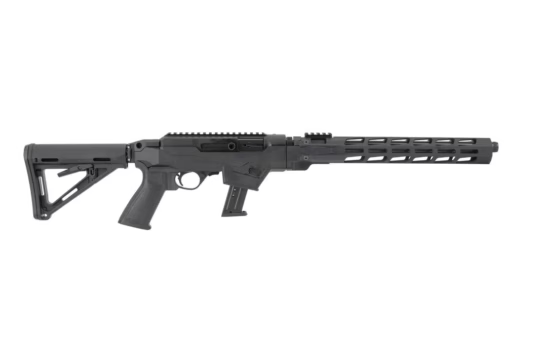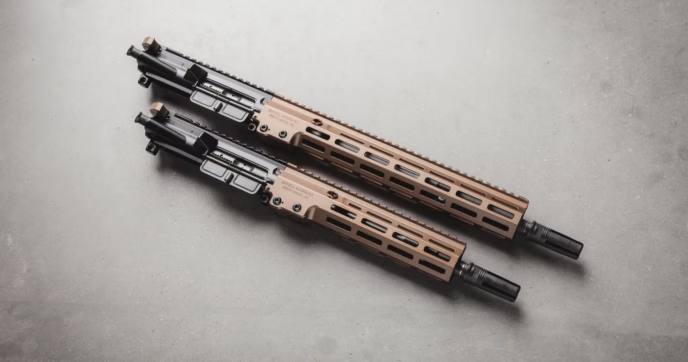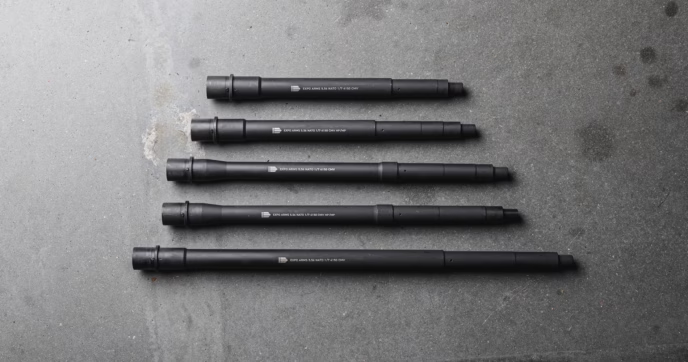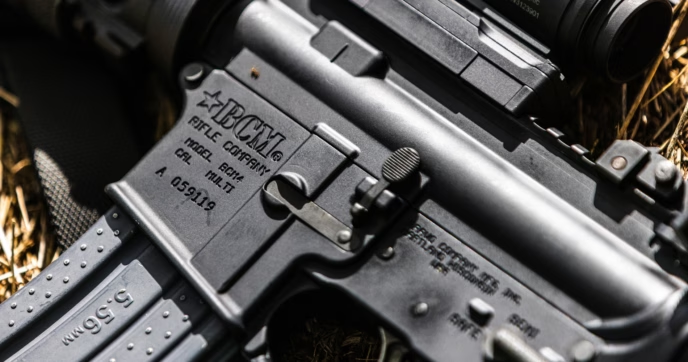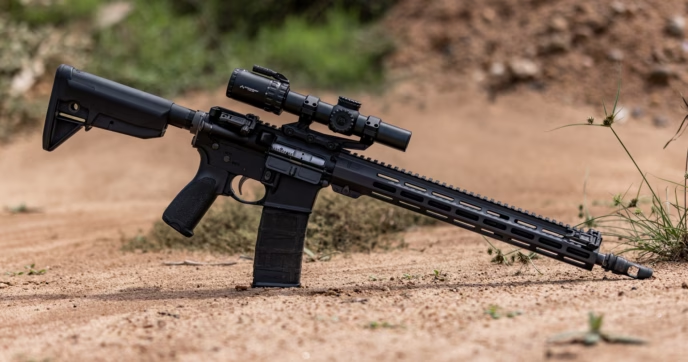Pistol caliber carbines are quite a unique subset of modern firearms. They fit within their own niche, effectively having their footing in both the rifle and handgun space. If you aren’t already familiar with what a PCC is, in their most basic form, all they are is a rifle chambered in a pistol caliber like 9mm or .45 ACP.
To the uninitiated, having a rifle chambered in a pistol caliber may seem like an odd choice, but PCCs offer an immense degree of utility, as they’ve been adapted to fit a multitude of different applications. While pistol calibers can’t go the distance quite like rifle calibers can, at closer ranges, they can be more than versatile enough to be used in competitive and recreational applications, as well as defensive ones too.
If you’re going into your search blind, you’ll find that there’s a lot to uncover when shopping for PCCs. So, to alleviate some of the stress that comes with the research process, we’ll be covering what they are, their pros and cons, and what to consider before making any final decisions.
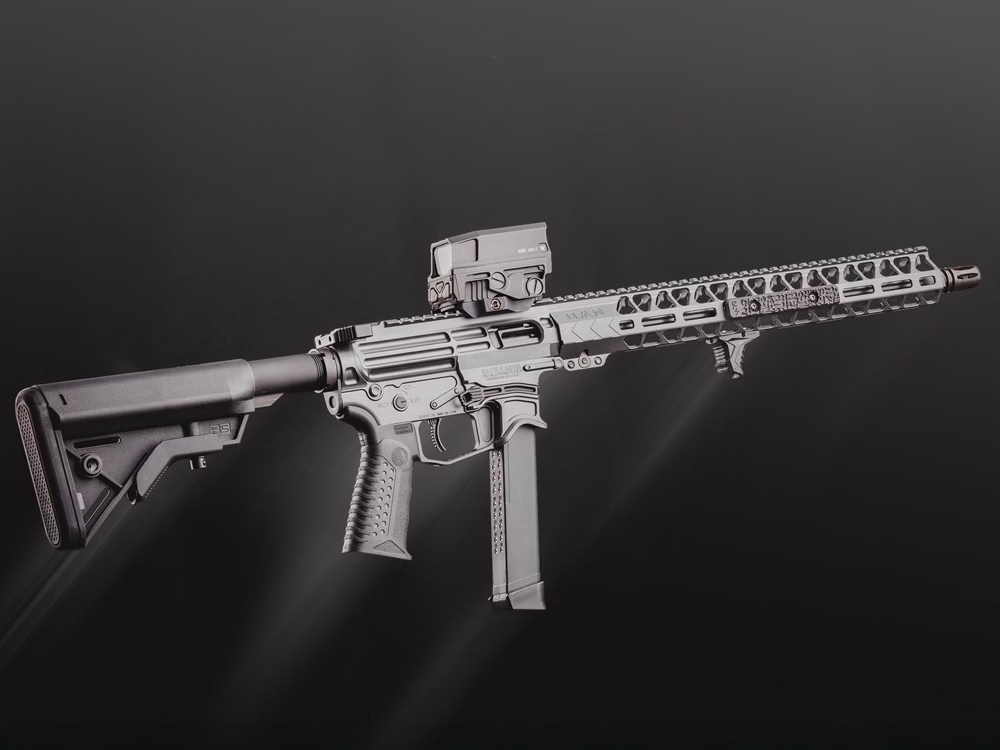
What Are PCCs?
Pistol caliber carbines, or PCCs as they’re better known, are a type of rifle that’s chambered in a pistol caliber. As simple as that sounds, there’s a lot to unpack when discussing them. For starters, let’s look at their nomenclature. Despite being called a ‘carbine’, not every PCC is technically a carbine. We highlight this at length in our guide, “Carbine vs. Rifle”, but the term carbine is used a bit ambiguously today.
Originally, ‘carbine’ was a term used to describe a firearm that was a shorter version of an already existing rifle. Take the Mosin Nagant for example. Originally, they were produced with a 29-inch barrel, but as the need for more compact and maneuverable rifles came about, the later Mosin Model 1938 and Model 1944 carbine rifles were developed with shorter 20-inch barrels.
However, throughout history, the term ‘carbine’ has been used erroneously as a naming convention for shorter-than-average rifles. Rifles like the M1 Carbine, famously used during WW2, aren’t a true carbine version of the M1 Garand as it lacked many of its features and components. And looking even farther back, pistols like the Mauser C96, a German Handgun, were at one point available in a ‘carbine’ configuration complete with a longer barrel and a stock, essentially being the inverse of a carbine despite being called one.
As far as pistol caliber carbines are concerned, it’s difficult to pinpoint the exact point in time they were created. Throughout history, there have been several compact firearms designed to use pistol calibers, but for the most part, pistol caliber carbines are a more modern design made for civilian market. While there are some rifle designs like the AR-9, which were derived from the original AR-15/M16 design, other models such as the MP5, Kriss Vector, and B&T APC9, are all unique in that they were originally designed as smaller, more compact platforms. So, are all PCCs true carbines? No—but they’re all similar in that they have rifle-style ergonomics and make use of pistol calibers like 9mm.
What are the Advantages of Using a 9mm Rifle?
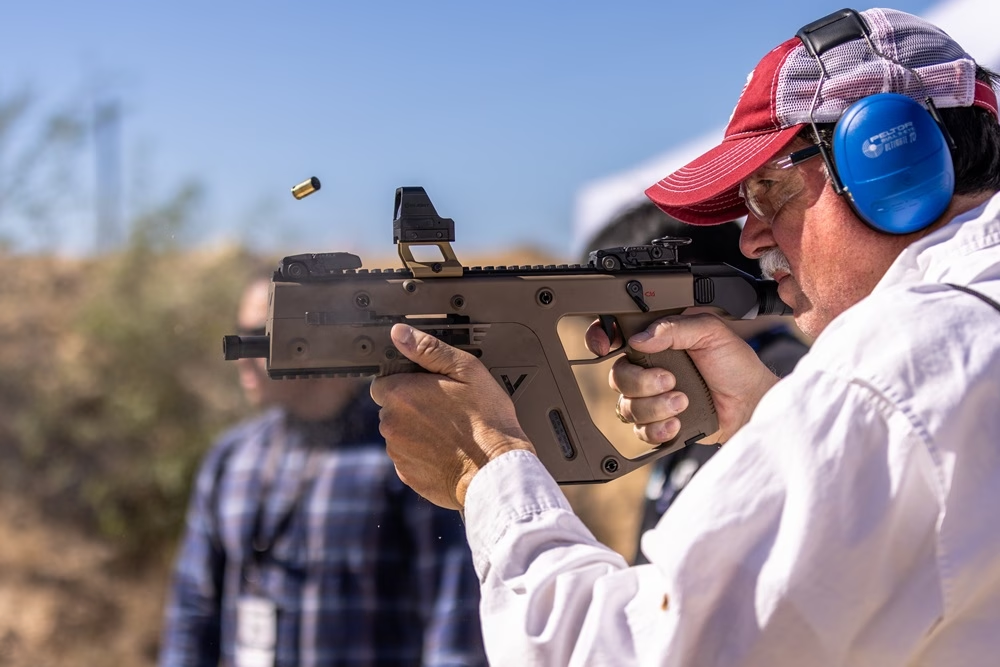
Lower Recoil
9mm rifles can have a much softer recoil impulse compared to rifles chambered in intermediate rifle cartridges like 5.56 NATO. By design, 9mm is a naturally low-pressure cartridge, and since it doesn’t hold as much powder as rifle cartridges, it generally produces less recoil when utilized on larger rifle platforms.
However, it’s important to note that a PCC’s recoil impulse is determined by more than just the caliber it uses. We’ll go more in-depth on this later, but one of the key factors that affects a PCC’s recoil impulse is its operating system. PCCs typically use a direct blowback system, using the force of the propellant’s ignition to force the bolt back. While simple, this can result in a harsher recoil impulse when compared to some intermediate rifles in certain (limited) circumstances.
Granted, this is dependent on the PCC itself and the ammo you use, but like we said, we’ll go more in-depth on this subject further below. However, for the most part, 9mm PCCs are generally easy to control.
More Budget-Friendly Ammunition
Compared to other calibers, including both pistol and rifle ones, 9mm has long been one of the most affordable cartridges in production. 9mm is used worldwide by countless Military and Law Enforcement Agencies, meaning it’s produced by a vast assortment of ammo manufacturers, making it one of the most common cartridges available.
On the civilian market, standard FMJ target ammo typically hovers around $0.20 to $0.30 price per round, while defensive and other specialized types of ammunition can range anywhere from around $0.50 to upwards $1.50+ per round, depending on the manufacturer and type of load. Compared to other pistol calibers like .45ACP, where FMJ ammo costs around $0.30 to $0.50 per round while defensive loads cost well over $2.00+ at times, 9mm is easily the more affordable of the two.
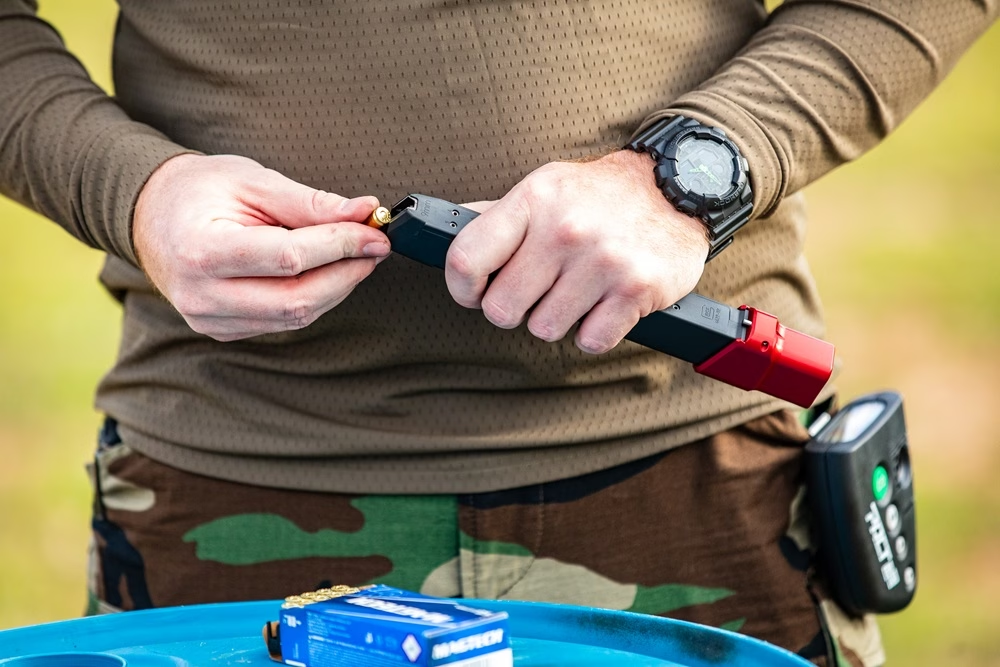
Compatibility with 9mm Handguns
While this isn’t true of all 9mm PCCs, many of them make use of 9mm magazine patterns designed for specific handgun models. PCCs like select AR-9s, the KRISS Vector, and select B&T APC9/GHM9 models are compatible with double stack GLOCK pattern magazines. Moreover, rifles like the Smith & Wesson FPC 9 are compatible with M&P9 magazines, while other rifles like the Ruger PC Carbine are compatible with Ruger Security 9 magazines, though they also come with an insert that makes them compatible with double stack GLOCK magazines.
Since magazine cross-compatibility is one of the main driving forces that brings newcomers to such firearms, it’s critical to recognize that only certain PCC models have this feature. Models like the HK SP5 and other MP5 clones are only compatible with MP5 pattern magazines, while rifles like the SIG Sauer MPX, CZ Scorpion, standard B&T APC9/GHM9 models, and even newer options like the Springfield Armory KUNA all use their own proprietary magazine designs. As such, if cross-compatibility is important, be sure to check your rifle’s magazine compatibility before buying.
Disadvantages of Running 9mm Rifles
Despite their many advantages, 9mm rifles aren’t the end-all be-all of rifle technology. Like any other platform, they have their limitations to consider, so if you plan to add one to your collection, it’s important to have a realistic understanding of their capabilities.
Limited Ranged Performance
As you might have already suspected, being chambered in a pistol caliber, 9mm rifles aren’t all that effective at distance. By design, 9mm is best suited for close-range engagements—even with a 16-inch barrel, your rifle’s effective range is going to be around 75 yards. And while it’s certainly possible to hit a target at 100 yards with a 9mm rifle, doing so reliably and consistently isn’t all that doable.
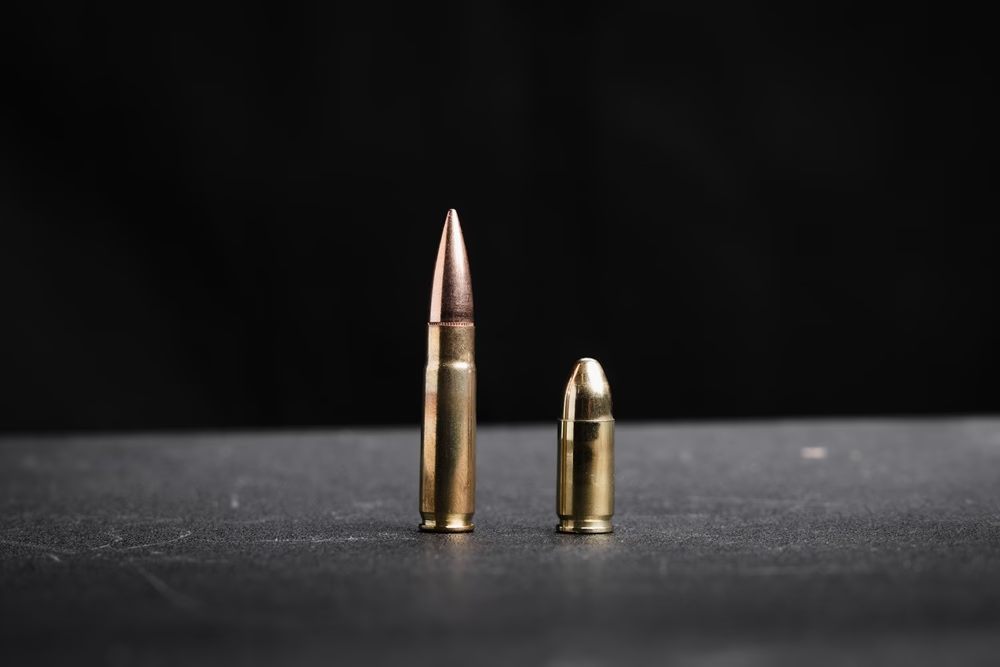
Less Stopping Power
Another thing to consider is 9mm’s power. If you plan to use a PCC in a defensive capacity, they’re a solid choice to consider, but as you’d suspect, it doesn’t offer the same power as other popular defensive rifle calibers like 5.56 NATO and .300 Blackout. Such calibers not only have a higher velocity than 9mm, but they’re also capable of imparting more energy on target.
Now, this isn’t to say that 9mm is ineffective by any means, as it’s one of the most used cartridges for personal and home defense. It’s just that, comparatively, it doesn’t offer the same level of stopping power. In a defensive capacity, there’s a lot to cover when comparing PCCs with something like the AR-15. So, we recommend checking out our guide, “PCC vs. AR-15” for some more insight into each platform’s respective performance.
Are PCCs worth it?
Of course, they are, but whether it’s a viable choice for you is up to your needs and preferences. PCCs fill a unique role, and while they aren’t necessarily the best choice for every application, they can still be a practical choice for many. So long as you understand them before buying, you can more easily decide if they’re the best choice for you.
Choosing the Best 9mm Rifle
If you’ve decided to opt for a PCC, you’ll find that there are 9mm rifles available in all sorts of configurations. Each one offering its own unique eccentricities that affect its performance, making it difficult to choose just one. While it’s not feasible to list out every 9mm PCC option, we can tell you what to look for in one.
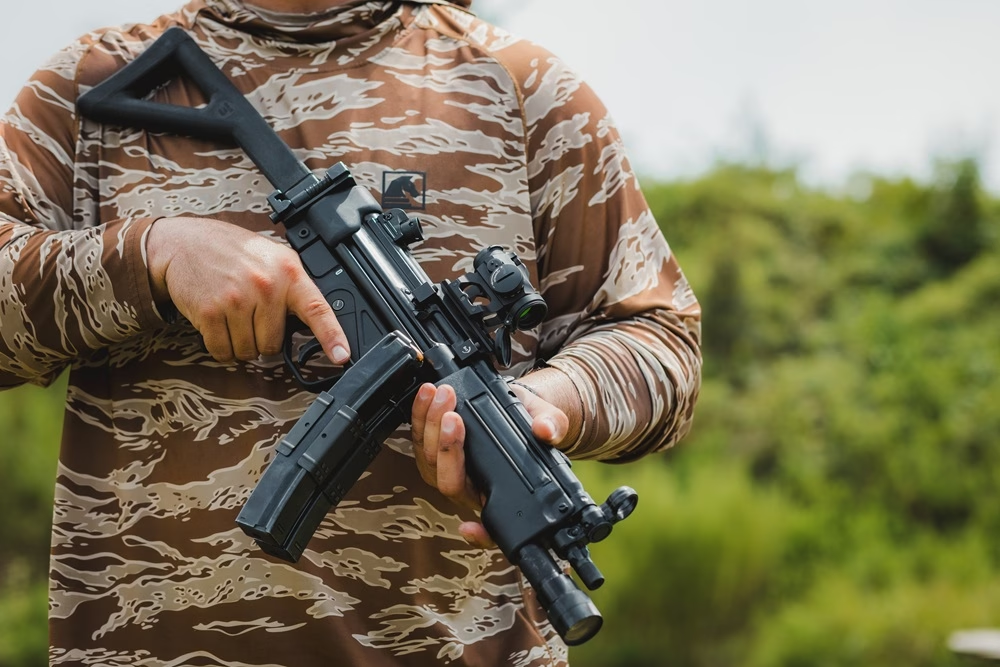
Operating System
Much like gas operated rifles, different pattern 9mm PCCs make use of different operating systems, such as direct and delayed blowback systems. While both are effective, they have a significant effect on the rifle’s recoil impulse, as well as its reliability.
As mentioned earlier, most PCCs available today make use of a direct blowback design. Direct blowback designs work by using the backpressure created by firing off the cartridge to cycle the bolt, hence the name “direct blowback”. These systems are simple and reliable, but they produce significantly more recoil than other PCC operating systems. They aren’t unwieldy by any means, but comparatively, direct blowback rifles have a sharper, more pronounced recoil impulse. Some popular PCCs that use this design are most AR-9 rifles, the CZ Scorpion, and the Ruger PC Carbine.
For the softest recoil impulse possible, your best bet is to opt for a rifle that uses a delayed blowback system. As their name suggests, they use specialized designs to delay the bolt from releasing until the chamber has had enough time to dissipate pressure, resulting in a softer recoil impulse. There are several delayed blowback systems used across different PCC platforms. One of the most notable is the roller delayed blowback system used on the MP5 which uses rollers built onto the bolt head to slow down the bolt’s cyclic speed. Additionally, some PCCs like the Nexus Firearms Evo Gen 1 use bearing delayed blowback systems, and others like select CMMG’s Banshee and Resolute AR-9 models use a proprietary Radial Delay blowback design.
Ergonomics and Customization Options
Generally, the ergonomics and manual of arms for most PCCs are intuitive. Each platform is going to come with its own eccentricities and unique manual of arms, but with some range time, it’s easy to get the mechanics down for most of the industry’s popular PCC platforms. Plus, thanks to the vast popularity of PCC platforms, their parts aftermarket has grown significantly. Just about every PCC can be easily changed to offer enhanced ergonomics tailored to your preferences.
This is, however, dependent on the platform. Not every PCC model boasts a large parts aftermarket. AR-9s, for instance, are one of the most adaptable platforms as nearly all AR-9 parts are interchangeable with standard AR-15 components. On the flipside, more unique options like the S&W M&P FPC, Kel-Tec SUB2000, and the Ruger PC Charger don’t have as many aftermarket parts options available. Even further, models like the HK SP5, KRISS Vector, CZ Scorpion, and SIG MPX, while popular, still aren’t as adaptable as the AR-9. Don’t let this discourage you though; there’s still a plethora of manufacturers crafting high-quality handguards, triggers, and more for these platforms, you just won’t have as many options to choose from.
If an elevated level of customization is ideal for you, the AR-9 is one of the best platforms to opt for. Components like its grips, stocks/braces, handguards, trigger groups, and charging handles can all easily be swapped out, allowing you to tailor your AR-9 build to fit a myriad of applications.

Price
The prices of PCCs can vary heavily depending on the manufacturer and overall design. On the lower end of the cost spectrum, you’ll find more basic direct blowback PCCs which typically cost around $250 to as much as $1,000+ depending on the model. Meanwhile, if you opt for one that makes use of a delayed blowback system, they’re considerably more expensive, with them ranging in price from around $800 to upwards of $3,200+.
Conclusion
9mm rifles will always be one of the more interesting subsets of modern firearms, effectively bridging the gap between handguns and rifles. By offering rifle-like ergonomics and control with the lower pistol calibers, PCCs have easily become some of the most popular offerings on the market. Still, despite their popularity, it can be immensely confusing to choose just one, as PCCs are available in all sorts of configurations, each with their own unique design, and features.
Standard direct blowback PCCs are a budget-friendly choice that can be configured and used across a multitude of applications, however, if you want a more premium option that offers less recoil, we recommend opting for a rifle that uses some form of delayed blowback.
Although it’s impossible to crown one specific PCC as the ‘best’ one, by knowing what to look for, you can easily narrow down the best choice for you. So long as you take your needs and preferences into consideration before making a final decision, you’ll make the right call in the end.
